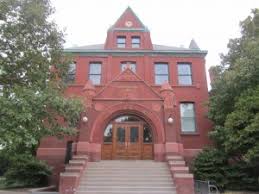Architecture Program

Architecture Program: Faculty Scholarly and Creative Activity
Document Type
Article
Date of this Version
2015
Citation
Published in Architecture, Culture, and Spirituality, edited by Thomas Barrie, Julio Bermudez, and Phillip JamesTabb (Ashgate, 2015), pp. 199-210.
Abstract
For some time now architects have operated with the notion that the building is complete when construction is finished. They strive to make the building perfect and wish to keep it so permanently. Seen from this point of view, any subsequent alterations seem to degenerate the original. And yet, buildings never stay the same as they take part in politics, economics, and religion through the course of time. Their changes may be caused by natural forces or artificial means, and may manifest physically or in meaning. For example, immediately after the inauguration of the Colosseum in Rome, structures were added beneath the arena's floor in order to accommodate gladiators and beasts. Since then, its meaning has changed from a place for spectacles to a temple of the sun god, a Christian site of martyrdom, and a romantic ruin, until it became a site of archeology, tourism, and entertainment. It has served as a source of building materials, a backdrop for squatter houses and fortresses, a specimen of classical .architecture, a medium for growing flora, and a stage for Fascist propaganda. Lightning started a fire, which burned the upper levels of the amphitheater's interior in 217 AD, and a number of earthquakes damaged the building, including one in 1349, which destroyed a substantial portion of the stadium at the south side. This portion still remains missing with a reinforced concrete wall to prevent further damage.
If changes are the norm rather than exception of buildings, is it not better for architects to find ways to accept and incorporate them into their work as assets than to consider them outside of their realm? This chapter will examine how incomplete, imperfect, and impermanent pieces of architecture engage their visitors and inhabitants in a manner that demonstrates their ontological significance. The study is intended as a first step toward critiquing the long-held assumption about the perfection, completeness, and permanence of architecture and constructing an alternative paradigm of aesthetics and ethics. The following is divided into three categories: synecdoche; palimpsest; and wabi. These three divisions roughly correspond to the incomplete, the impermanent, and the imperfect respectively, but the three are not necessarily mutually exclusive.
Included in
Architectural History and Criticism Commons, Historic Preservation and Conservation Commons


Comments
Copyright © 2015 Thomas Barrie, Julio Bermudez, and Phillip James Tabb. Used by permission.